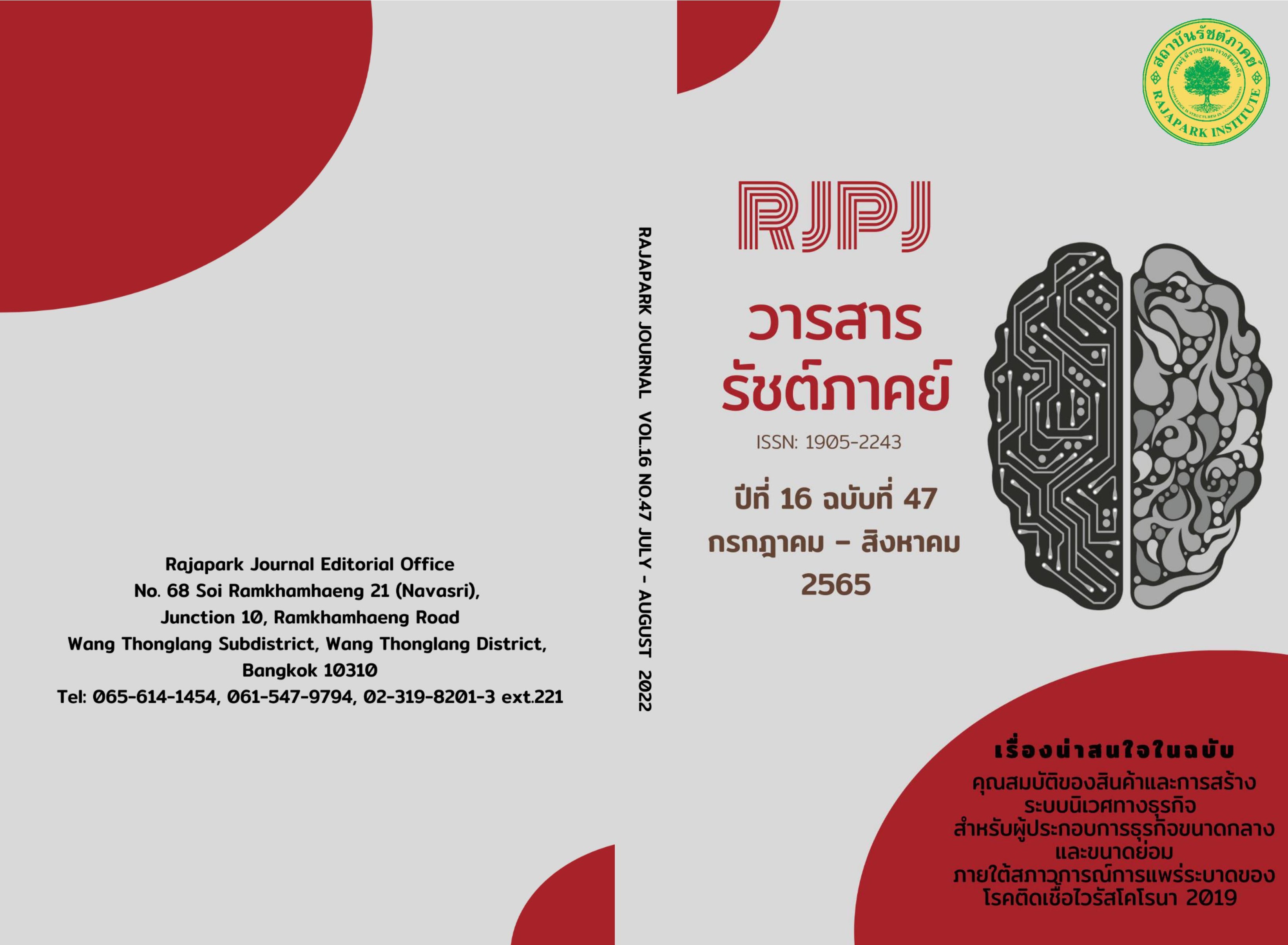Governance System in Influence the Effectiveness of Thai Business Organization
Main Article Content
Abstract
The objectives of this research were 1) to study the level of governance and effectiveness of the Thai business organization and 2) to study the factors of the governance system influencing the effectiveness of the Thai business organization. It is quantitative research along with qualitative one. The samples used in the research were 400 limited companies in Bangkok. Data were collected by questionnaires and analyzed using descriptive and reference statistics. Collect data by conducting in-depth interviews with key informants. They consisted of 7 senior executives from the private and public sectors concerned. Specifically selected data were analyzed by content analysis. Pastoral care at a high level and considering each component found that the responsibility at the highest level, followed by responses, transparency, jurisprudence, and equality. Participation aspect and the consensus focus, respectively, and 2) the governance factors influencing the effectiveness of the Thai business organization. It was found that the overall effectiveness of the Thai business organization found to be at a high level and when considering each component, it was found that the customer aspect was at the highest level, followed by learning and development. The administrative process of the organization and finance, respectively.
Article Details

This work is licensed under a Creative Commons Attribution-NonCommercial-NoDerivatives 4.0 International License.
Views and opinions appearing in the Journal it is the responsibility of the author of the article, and does not constitute the view and responsibility of the editorial team.
References
Ansell, C., & Gash, A. (2008). Collaborative Governance in Theory and Practice. Journal of Public Administration Research and Theory, 18(4), 543–571.
Department of Business Development. (2020). Business Data Warehouse System. http://datawarehouse.dbd.go.th/bdw/search/search2.html.
Eddy, W.B. (1981). Public Organization Behavior and Development. Winthrop.
Emerson, K., & Nabatchi, T. (2015). Collaborative Governance Regimes. Georgetown University.
Hall, M.J. (2002). Aligning the Organization to Increase Performance Results. The Public Manager, 31(2), 7-10.
Harmon, M.M., & Mayer, R.T. (1986). Organization Theory for Public Administration. Scott Foresman and Company.
Khampee, K. (2016). Government Services for Business: Biz Portal. https://www.ega.or.th/upload/download/file_c2fde2928d5c3bf4c07290e 52039c5f0.pdf.
Maneerojana, P. (2009). Asymmetrical Partnerships: Politicians and Government Officials. http://www.rsunews.net
Phusitphokai, T. (2008). How can Transparency come True?. www.theiiat.or.th.Knowledge.
Rhodes, R.A.W. (1996). The New Governance: Governing without Government in Political Studies. Political Studies, 44, 652-667.
Srijanphet, S. (2008). Risk Management and Corporate Governance. Journal of Business Administration, 35(135), 1-3.
Steers, R.M., Ungson, G.R., & Mowday, R.T. (1985). Managing Effective Organizations: An Introduction. Kent.
Transparency International. (2020). Corruption Perceptions Index. https://www.transparency.org/en/cpi/2020.
United Nations Economic Commission for Africa. (2007). Economic Report on Africa 2007 Accelerating Africa’s Development through Diversification. Publications Economic Commission for Africa.
UNDP (United Nations Development Programme). (2002, January 1). Human Development Report 2002: Deepening Democracy in a Fragmented World. UNDP. https://hdr.undp.org/content/human-development-report-2002
Yamane, T. (1967). Statistics, An Introductory Analysis (2nd ed.). Harper and Row.


